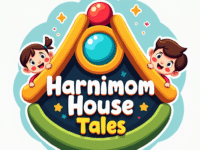
Stories to Help Toddlers Cope With Big Feelings Quietly
Why Quiet Coping Matters for Toddlers
Toddlers have big feelings in tiny bodies. Frustration, disappointment, sadness—even joy—can overwhelm them. Many toddlers cry loudly, hit, scream, or run when emotions take over. And that’s completely developmentally normal. But what if they could begin learning quieter ways to express and move through those feelings?
Teaching a toddler to pause, breathe, or retreat to a cozy space instead of exploding is a long process. But storybooks help plant the seed. They show toddlers characters who feel intense emotions and model safe, calm responses.
In our home, I’ve seen firsthand how storybooks became emotional anchors. My child began identifying with certain characters and mimicking their calm-down strategies. It’s like having emotional scripts they can act out when their own words aren’t quite ready yet.

The Power of Storytelling in Emotional Regulation
Books allow toddlers to observe strong emotions from a safe distance. Whether it’s a bear learning to roar less loudly or a bunny taking a breath before speaking, storybook characters help children:
- Name what they’re feeling
- Understand that they’re not alone
- Discover gentle ways to cope
When you read the same story multiple times, your child begins to anticipate how the character will react. That repetition makes the lesson sink in deeply.
Our Favorite Books for Quiet Coping Strategies
“The Rabbit Listened” by Cori Doerrfeld
A beautifully simple story about a child who experiences loss and frustration. Various animals try to help in loud or silly ways, but the rabbit just listens. A perfect introduction to quiet empathy.
“When Sophie Gets Angry—Really, Really Angry…” by Molly Bang
Sophie roars, runs, and finds a quiet space outdoors. This book gives toddlers permission to feel—and offers a path to calm.
“Sometimes I’m Bombaloo” by Rachel Vail
A relatable book for toddlers who “lose it” when emotions build up. It ends with gentle guidance on how to reconnect and recover.
“Ellie’s Big Feelings: A Soft Story About Loud Emotions” by Harnimom
In this original story, Ellie feels mad, jealous, and confused—all in one day. Instead of yelling or hitting, she uses quiet strategies like squeezing her toy, breathing deeply, or asking for a hug. A heartwarming, toddler-friendly guide to handling emotions kindly.
Practical Tips for Using These Books
- Read them outside of the meltdown—not in the heat of the moment.
- Act out the character’s strategies together. Try saying, “What did Ellie do when she was mad? Let’s try it!”
- Keep a few favorites in your calm-down corner or quiet basket.
- Use consistent phrases from the book when your toddler is upset: “Let’s listen like the rabbit,” or “Let’s breathe like Ellie.”
From Loud to Quiet: Our Journey
My daughter used to scream and throw her cup when frustrated. Now, she often stomps once and says, “I’m mad,” then walks away. That’s major growth. I credit a lot of that to the books we’ve read and the way they helped her practice being calm—even if she doesn’t always manage it in the moment.
Some days, she’ll go to her reading corner and grab Ellie’s Big Feelings all by herself. That’s how I know we’re on the right path—not to perfection, but to understanding.
Bonus Printable: Quiet Feelings Toolkit
To support your toddler’s emotional journey, download our free printable set:
- Feelings Thermometer Chart
- “What Can I Do When I’m Mad?” Poster
- Ellie’s Calm-Down Strategy Cards
SHOP NOW!
Continue the Series
Next up: Deep breathing and mindfulness—taught the toddler way.













